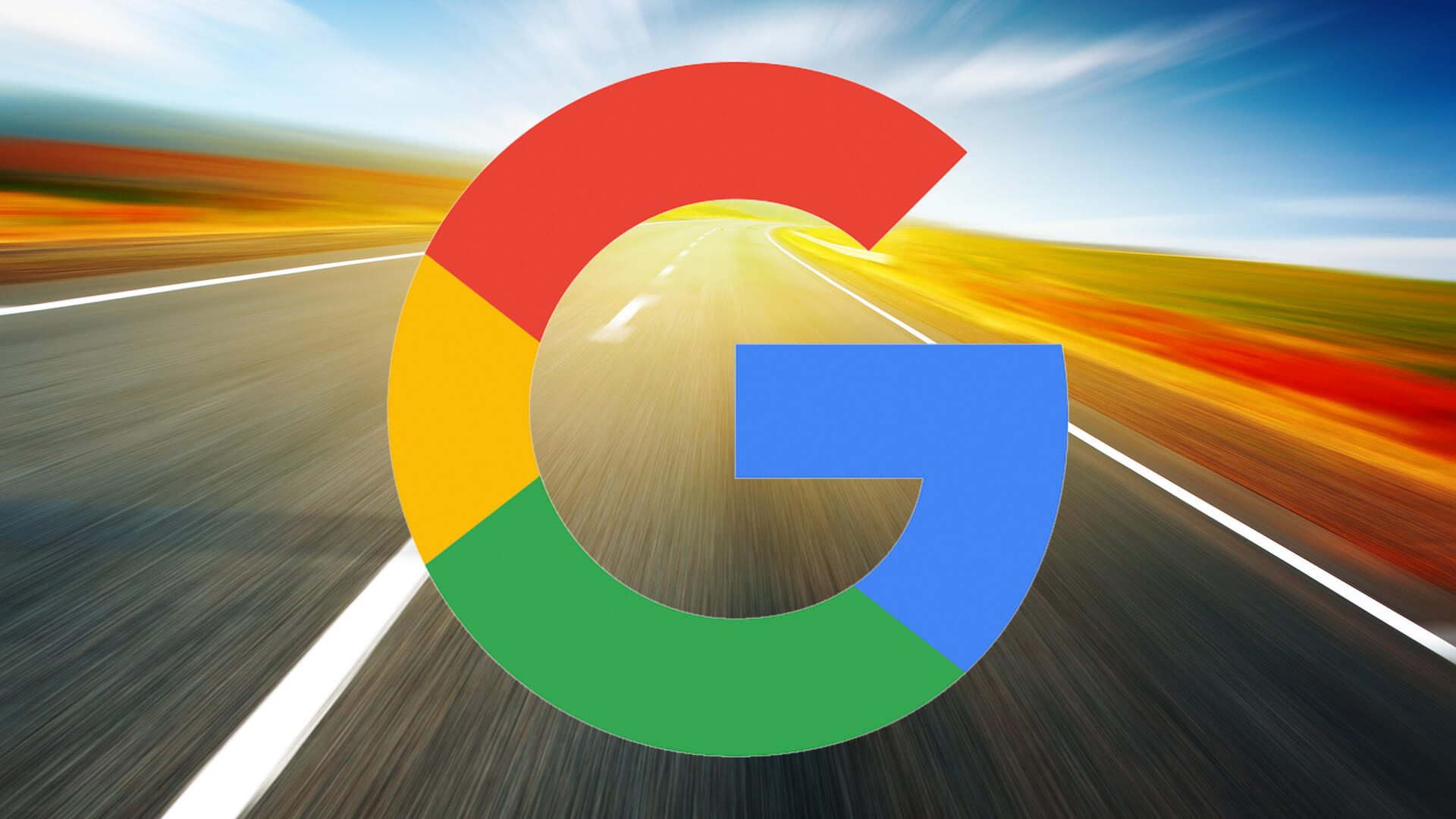What Is Google's AI Mode? Unpacking The Intelligence Behind Your Everyday Searches
Detail Author:
- Name : Prof. Marcellus Toy
- Username : mohammad.becker
- Email : kozey.viva@yahoo.com
- Birthdate : 1995-02-22
- Address : 55276 Thompson Pine Mayermouth, FL 78881-8453
- Phone : (517) 375-0109
- Company : Kris-Nienow
- Job : Online Marketing Analyst
- Bio : Unde voluptatem animi est non. Velit ut nam dolor cumque dolores delectus vel. Perspiciatis aut blanditiis ut.
Socials
tiktok:
- url : https://tiktok.com/@nyah.graham
- username : nyah.graham
- bio : Aliquid autem facere eaque animi voluptas. Itaque et velit quia cumque.
- followers : 6540
- following : 2315
twitter:
- url : https://twitter.com/nyah736
- username : nyah736
- bio : Ut ullam qui magni eligendi. Quidem voluptate cum a cum odit voluptatum veniam. Quod ut vero aut aperiam. Adipisci repellendus est ad.
- followers : 902
- following : 980
Have you ever stopped to think about the quiet brilliance working behind your computer screen or phone when you type something into Google? It's pretty amazing, isn't it? When you search the world's information, looking for webpages, images, videos, and so much more, there's a lot going on to help you find just what you're after. Google, you see, has many special features to help you discover exactly what you're looking for, and a big part of that is its thoughtful use of artificial intelligence, or AI.
Many people ask, "What is Google's AI mode?" It's a fair question, and it's not quite a simple "on" or "off" switch you flip. Instead, it's more like a deep layer of smartness woven into nearly everything Google does. This intelligence helps shape your online experience, making things more helpful and, you know, just better. It's a way Google works to make information accessible to everyone, and that's a rather big deal.
So, let's take a closer look at what this "AI mode" truly means. We'll explore how Google uses this smart approach to organize the vast amount of information out there, from understanding your search queries to translating languages and even helping you find the perfect picture. It's all about making your digital life a bit easier, actually.
Table of Contents
- What Exactly is Google's "AI Mode"?
- AI in Google Search: Making Information Accessible
- Understanding What You're Looking For
- Personalizing Your Discoveries
- Beyond Search: AI Across Google's Services
- Google Translate: Bridging Languages
- Image Recognition and Visual Search
- Personalized Experiences and Recommendations
- AI in Everyday Tools: From Gmail to Maps
- The Benefits of Google's Integrated AI
- How Google Develops and Uses AI
- Looking Ahead: The Future of Google's AI
- Frequently Asked Questions About Google's AI Mode
What Exactly is Google's "AI Mode"?
When folks talk about "Google's AI mode," they're usually referring to the widespread application of artificial intelligence across Google's many products and services. It's not, you might say, a singular setting you can switch on or off in your account. Instead, it's a fundamental part of how Google operates, a bit like the very air that helps a bird fly. This integrated approach means that AI is always working in the background, making your interactions with Google's services smoother and more effective, you know?
Google itself says, "Explore our innovative ai products and services, and discover how we're using technology to help improve lives around the world." This statement really captures the spirit of what "AI mode" represents. It’s about using smart technology to make a positive difference, whether that's helping you find a specific piece of information or making a new service possible. It's a way of thinking about how computers can learn and adapt, which is pretty cool, if you think about it.
So, rather than a special button, Google's "AI mode" is the collective intelligence that powers everything from its search engine to its translation services, and even its image recognition tools. It's a continuous process of learning and refinement, always working to give you the most relevant and helpful results. This means that every time you use a Google product, you are, in a way, engaging with its "AI mode," whether you realize it or not. It’s just there, doing its job, sort of seamlessly.
AI in Google Search: Making Information Accessible
The very heart of Google, its search engine, is where AI really shines. When you type a query into the search bar, you're not just getting a list of websites that contain those exact words. Oh no, it's much more sophisticated than that. Google's AI works to truly understand what you mean, not just what you type, which is a rather big distinction.
Understanding What You're Looking For
Think about it: you might type "best place to eat pizza near me," and Google doesn't just look for pages with those exact words. It understands "best place to eat pizza" as a desire for restaurant recommendations, and "near me" as a request for local results based on your current spot. This ability to grasp context and intent comes directly from Google's AI. It's how Google search works, taking its approach to make the world’s information accessible to everyone. It's about getting results from Google each time you search, and that's pretty helpful.
This intelligent understanding also helps with misspellings or awkward phrasing. The AI can often figure out what you meant to type, saving you time and frustration. It's like having a very smart assistant who anticipates your needs, nearly before you even fully express them. This is, you know, a core part of how Google makes its comprehensive search work for you, every single day.
Personalizing Your Discoveries
Another amazing aspect of Google's AI in search is personalization. Your Google account helps you do more by personalizing your Google experience and offering easy access to services. When you sign in to your Google account, the AI can use your past search history, your location, and even your preferences to tailor results just for you. For example, if you often search for hiking trails, Google might prioritize hiking-related results when you type something general like "outdoor activities." It’s a bit like having a search engine that learns what you like, and that’s pretty neat.
This personalization is designed to make your search results more relevant and useful to you, specifically. It's not about hiding information, but about surfacing what you're most likely to find helpful based on your unique patterns. So, while two different people might search for the same thing, the order or specific results could be slightly different because of how Google's AI adapts to each individual, which is rather clever, actually.
Beyond Search: AI Across Google's Services
While search is a prime example, Google's "AI mode" stretches far beyond just finding information on the web. It's integrated into countless other products and services that many of us use every single day, often without even thinking about it. These smart additions really do make a difference in how we interact with technology, you know?
Google Translate: Bridging Languages
Consider Google Translate. It's a service, offered free of charge, that instantly translates words, phrases, and web pages between English and over 100 other languages. This incredible feat is powered by sophisticated AI models. These models don't just swap words; they understand the meaning and context of sentences to provide more natural and accurate translations. It's a complex task, and the AI is constantly learning from new language data, making its translations better and better over time. This is, truly, a remarkable example of AI helping connect people across different cultures.
The ability to translate in real-time, whether through text, voice, or even images, has opened up new possibilities for communication and understanding. It's a tool that breaks down barriers, allowing people to access information and connect with others regardless of their native tongue. So, it's pretty powerful, if you think about it.
Image Recognition and Visual Search
Have you ever used Google Photos to search for pictures of "dogs" or "mountains" and found it magically groups them for you? Or perhaps you've used Google Lens to identify a plant or translate text from a sign? This is all thanks to Google's AI mode, specifically its capabilities in image recognition. Google boasts the most comprehensive image search on the web, and that's because its AI can "see" and understand what's in pictures.
This technology helps you find exactly what you're looking for, even if you don't have the words to describe it. It's about making visual information as searchable as text, which is a very handy feature. The AI learns to identify objects, faces, places, and even emotions within images, allowing for powerful visual search experiences. It's a rather neat trick, and it keeps getting better.
Personalized Experiences and Recommendations
Beyond search, Google's AI also works to personalize other parts of your digital life. Think about YouTube recommendations, Google News feeds, or even the ads you see. These are often shaped by AI that learns from your past interactions, what you've watched, read, or clicked on. The goal is to show you content that you're more likely to find interesting or relevant, making your time online more engaging. It’s a bit like a smart curator, you know?
This personalization can extend to things like Google Maps suggesting routes based on typical traffic patterns at that time of day, or Google Assistant understanding your voice commands even with different accents. It's all part of the continuous effort to make Google's services feel more intuitive and helpful for each individual user, actually.
AI in Everyday Tools: From Gmail to Maps
Google's AI mode is subtly integrated into many of its everyday tools. In Gmail, for instance, you might notice "Smart Compose" suggesting phrases as you type, or "Smart Reply" offering quick responses to emails. These features save you time and effort, and they're powered by AI that predicts what you're likely to say. It's a rather convenient addition, honestly.
Google Maps also uses AI to predict traffic conditions, suggest the fastest routes, and even help you find parking. The AI processes vast amounts of real-time and historical data to provide these insights, helping you get where you need to go more efficiently. These small, yet significant, AI-driven improvements make a big difference in our daily routines, you know? It's pretty amazing how much goes on behind the scenes.
The Benefits of Google's Integrated AI
So, why does Google invest so much in its "AI mode"? The benefits are pretty clear, actually. First off, it makes information much more accessible. By understanding what you mean, not just what you type, Google helps you uncover what Google Search is, how it works, and the approach Google has taken to make the world’s information accessible to everyone. This means you can find what you need faster, with less effort, which is a rather big plus.
Secondly, AI helps personalize your experience, making Google's services more relevant to your individual needs and interests. Your account helps you do more by personalizing your Google experience and offering easy access to everything. This means less sifting through irrelevant information and more time spent on what truly matters to you. It's about making the digital world feel a bit more tailored, you know?
Moreover, Google's AI helps improve lives around the world by powering tools like Google Translate, which breaks down language barriers, or by making information about health and safety more readily available. It also contributes to the efficiency of daily tasks, from navigating traffic with Maps to drafting emails with Smart Compose. These are all ways AI contributes to a smoother, more connected world, and that's pretty good, I think.
The continuous learning of Google's AI also means that these services are always getting better. They adapt to new information, new trends, and new ways people search and interact. This ongoing improvement ensures that Google remains a powerful tool for discovery and connection, always striving to be more helpful, which is a very important goal.
How Google Develops and Uses AI
Google's approach to AI development is a pretty thoughtful one. They focus on creating AI that is helpful, fair, and safe. This means a lot of research goes into making sure the AI models are unbiased and don't inadvertently perpetuate harmful stereotypes. It's a continuous process of testing and refinement, you know, to ensure the technology serves everyone well.
They also put a lot of emphasis on user privacy. When AI personalizes your experience, it does so by processing data in a way that aims to protect your individual information. For example, using a private browsing window to sign in or learning more about using guest mode are ways to control how your information is used, and Google provides tools for you to manage your data and privacy settings. This commitment to responsible AI development is a core part of their philosophy, which is rather reassuring, actually.
The sheer scale of data Google processes, combined with its advanced computing resources, allows its AI models to learn and improve at an incredible pace. This constant learning is what keeps Google's services at the forefront of technology, always finding new ways to make things easier and more intuitive for users worldwide. It’s a massive undertaking, to be sure.
Looking Ahead: The Future of Google's AI
The story of Google's "AI mode" is still being written, so to speak. The company is always exploring new ways to integrate AI to make its services even more intuitive and helpful. We're seeing more and more conversational AI, for example, that can understand complex questions and provide more natural answers. This means interacting with Google could feel more like talking to a person, which is a pretty exciting prospect.
There's also a big push towards making AI even more proactive, anticipating your needs before you even have to ask. Imagine your phone suggesting an umbrella because it knows it's going to rain where you are, or your calendar automatically scheduling a reminder for a task it knows you typically do at a certain time. These are the kinds of smart, assistive experiences that Google's ongoing AI development aims to deliver, you know?
As AI continues to evolve, Google's commitment to using this technology responsibly and for the benefit of all remains a guiding principle. It's about creating tools that empower people, make information more accessible, and ultimately, improve lives around the world. The future of Google's "AI mode" is one of continuous innovation, always seeking to make technology work harder and smarter for you, which is a very good thing, I think.
Frequently Asked Questions About Google's AI Mode
Here are some common questions people often have about Google's AI mode:
Is Google's AI mode a setting I can turn on?
No, you can't just flip a switch to turn on "Google's AI mode." It's not a single setting. Instead, AI is deeply woven into almost all of Google's services, working in the background to make them smarter and more helpful. So, when you use Google Search, Google Translate, or even Google Photos, you're already experiencing its AI at work, you know? It's just part of how things operate.
How does Google use AI in its search results?
Google uses AI in its search results to do a few important things. It helps the system understand what you mean when you type a query, even if your words aren't perfect. It also helps rank information to show you the most relevant and helpful results first. Plus, it can personalize your search experience based on your past activity, making the results more tailored to you. It's all about making sure you find exactly what you're looking for, actually.
What are some examples of Google's AI products?
There are many examples of Google's AI products that you might use every day. Google Search itself is a prime example, with its smart understanding of queries. Google Translate, which instantly translates languages, is another big one. Also, think about image search, where the AI recognizes objects in pictures. Even features like Smart Compose in Gmail or traffic predictions in Google Maps are powered by Google's innovative AI. These products are all designed to help improve lives around the world, you know?
So, the next time you use Google, remember the quiet intelligence working behind the scenes. It’s all part of making your digital life a bit easier and more connected. Learn more about Google's core services on our site, and link to this page for search tips. You can also explore more about Google's AI initiatives by visiting ai.google, which is a pretty good place to start, actually.


